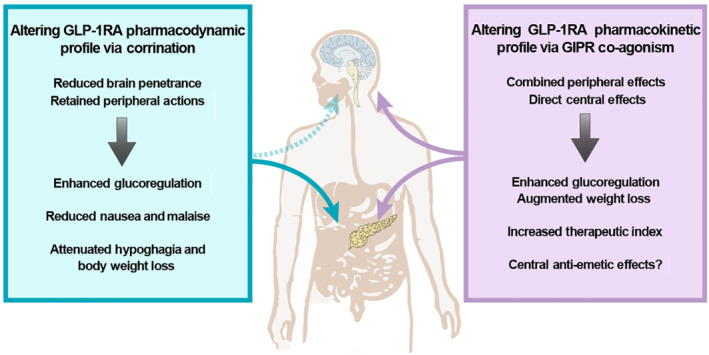FIGURE 3.

Main effects and mechanisms of vitamin B12 (B12)/cobinamide (Cbi)–GLP‐1 receptor agonist (GLP‐1RA) and GIP receptor (GIPR)/GLP‐1 receptor (GLP‐1R) strategies. Corrination reduces brain penetrance, radically changing the pharmacodynamic profile of GLP‐1 receptor agonists. Corrinated GLP‐1 receptor agonists retain a peripheral site of action when systemically administered, providing a pancreatic mechanism for GLP‐1 receptor‐mediated glycaemic control, without producing any centrally mediated illness‐like behaviours (i.e., nausea and emesis). GIPR/ GLP‐1 receptor dual agonism enhances peripheral effects on glucose handling, while simultaneously decreasing feeding and body weight via direct central actions. Such a combinatorial approach offers valuable opportunity to increase the therapeutic window/index via dose modifications. Moreover, GIP receptor agonism may also antagonize GLP‐1 receptor emetic signal(s) by engaging a yet unknown central mechanism(s) that could reduce the incidence and severity of nausea and emesis characteristic of current GLP‐1 receptor‐based approaches
